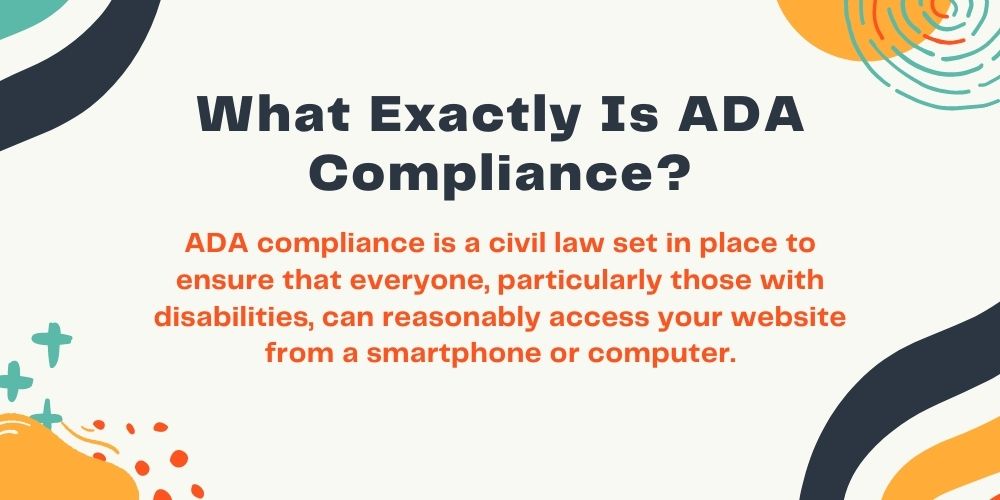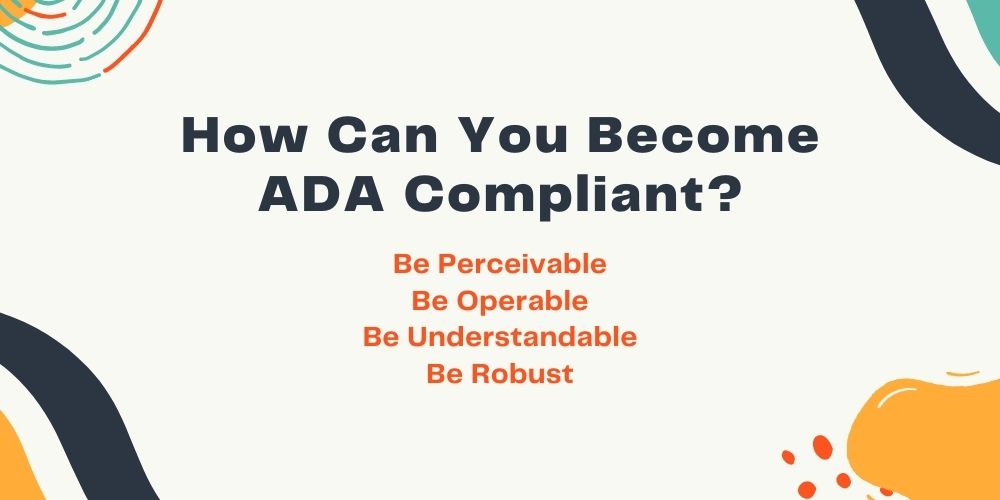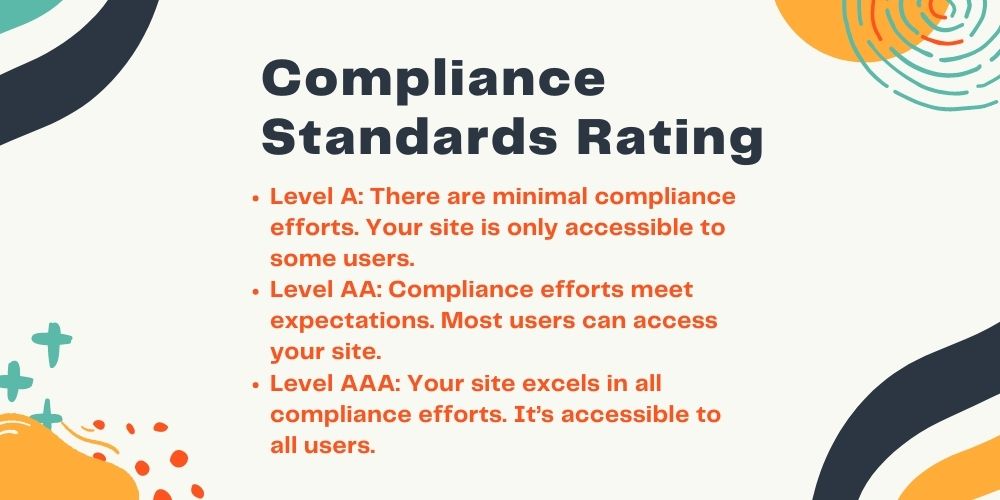ADA Compliance for Websites: What You Need To Know
ADA compliance is an important thing for companies with websites to look into. If you want to know more about this legal concept, this guide is here to help.
As a company, it’s your goal to ensure that you can provide your products and services to anyone who might want to purchase them. After completing your market research and determining your target audience, it should be easy to figure out how to conduct your business.
Most of the time, this will involve selling your products or services online. Sometimes, in-person sales are necessary, but many companies want to have some sort of online presence to reach most of their consumers.
When designing a website, businesses keep their target audience and the components of user-friendly navigation in mind. However, during this process, many companies tend to forget to make their website accessible to those with disabilities.
This is why the government enacted the Americans with Disabilities Act Standards for Accessible Design (ADA). If you’re unsure what ADA compliance for websites is or how to attain it, read this guide going over everything you need to know about it. This way, you can have a functional website that accommodates everyone.

What Exactly Is ADA Compliance?
Before we get too deep into what you need to know about this compliance, you must understand what it is exactly. ADA compliance is a civil law set in place to ensure that everyone, particularly those with disabilities, can reasonably access your website from a smartphone or computer.
Some people confuse this law with Section 508, but that one only applies to government agencies. This one expands to most other businesses in the public sphere.
Who Does It Apply To?
Of course, most businesses offer products or services to the public, so who exactly does ADA compliance actually apply to? Obviously, all government organizations fall under this category, but those organizations that the government considers places of public accommodation according to Title III also apply. The same goes for any business that has 15 or more employees. Finally, all companies that exist for the public’s benefit must also consider ADA compliance. Here’s a list of common examples:
- Schools
- Banks
- Law offices
- Healthcare providers
- Grocery stores
- Public transportation
- Gyms
- Hotels
- Social services
This isn’t a comprehensive list, but it contains most of the significant organizations and businesses. Chances are, your business falls under one of these categories, meaning that if you have a website, you must ensure that it’s ADA compliant.

How Can You Become ADA Compliant?
Of course, you can’t be compliant if you don’t know what that entails. Fortunately, we’re here to ensure you know everything important for making your website ADA compliant. There are four main steps you should cover when building or reworking your website.
Be Perceivable
Generally, the way that most people perceive a website is by looking at it. Sometimes, there will be videos or sounds that help with navigation, but simple visuals and words are the most important. That means you need to make sure that those who can’t see have a way to perceive the site.
Including a program that can read the text on the screen will help someone with visual impairments understand what your website is about. If you have a lot of images, you’ll need a way to describe those too. Fortunately, if you use image alt texts for each picture, these programs can also read those for users.
On the other side of things, we have those who are hard of hearing. While sound isn’t as important for most websites, it’s still something you need to consider, especially if you heavily rely on videos to explain things. For any audio on your site, be sure to include closed captioning so that those who have trouble hearing can better understand and use your website.
Be Operable
Of course, offering these alternatives doesn’t mean much if your website is still inoperable to those with disabilities. When offering alternative ways to navigate your site, you need to give all the same options to those who need to use them. That means if your solution for these people limits how they can interact with your site, you might fail a compliance check.
Unfortunately, ensuring that every aspect of your website is operable to those with disabilities is difficult to simply check on your own. Unless you have experience with ADA compliance and website coding, you’ll need to hire a web developer who can check through your HTML to ensure everything works properly.
Be Understandable
On top of that, everything you offer for those with disabilities needs to make sense to the average user. For example, if the text-to-speech bot only directly reads text from the webpage and doesn’t explain deeper concepts, the user might not understand where they need to go next to proceed.
It’s a good idea to test your programs with a group of people who need them to see if they work as intended. Have them use your navigation tools and fill out forms to ensure everything is understandable to those who decide to use your site.
Be Robust
Finally, don’t take shortcuts when applying these tools. To save time and effort, some companies will shorten descriptions and many other words throughout the site. The goal of ADA compliance is to offer a one-to-one experience for those with and without disabilities. You need to be thorough with the explanations and directions you use. Trying to cut corners will only lose you points in your rating.

What Is the Compliance Standards Rating?
We’ve mentioned the final rating of a company’s ADA compliance a couple of times but haven’t explained what it is yet. The compliance standards rating is the grade you’ll receive based on how accessible your site is for disabled users. Knowing the standards rating beforehand will help you ensure that you meet the minimum requirements before having ADA officials check your site. The three levels to the ADA compliance standards rating are as follows:
- Level A: There are minimal compliance efforts. Your site is only accessible to some users.
- Level AA: Compliance efforts meet expectations. Most users can access your site.
- Level AAA: Your site excels in all compliance efforts. It’s accessible to all users.
While Level AAA is ideal, most companies only make it to Level AA. Fortunately, this is all you need to pass the compliance regulations. If your site ranks at Level A, you’ll need to rework it to make it more ADA compliant.
What Happens if You Aren’t Compliant?
Due to the potential difficulties of becoming ADA-compliant, some companies decide to forgo the website changes and take the chance of not getting caught. However, sometimes, the company doesn’t know their site has to be compliant and therefore breaks the rules unintentionally. While the latter group is more likely to receive nothing more than a warning, both can get severe penalties for not complying.
Most of the time, this will result in ADA fines. The first violation is $75,000, and each additional one is $150,000 after that. This can absolutely cripple most smaller companies that aren’t ready for such a hefty charge.
On top of that, someone with disabilities who couldn’t properly access your site and suffered because of it can sue you. This will lead to high legal fees, a possible settlement, and, worst of all, a hit to your company’s reputation.
Once that’s all over, you’ll still have to take the time to rebuild your website to be ADA-compliant or pay someone to do it for you. That means that the work you avoided early on is still necessary in the end, making the risk of being noncompliant not worth taking.
Should You Abide by These Guidelines?
After learning about the potential fallout that could happen if they don’t follow ADA compliance guidelines, most businesses will do their best to abide by them, even if they don’t have to. However, all companies should try to become ADA compliant, regardless of their need.
The reason for this is that alienating a group of consumers will only hurt your company. Not only will you miss out on sales from a large potential audience, but you’ll build a bad reputation among that group. That means those who support people with disabilities will also avoid your products or services, and once the word gets out on the internet, your reputation will suffer even more. Even if you avoid all the fines and legal fees, your company will take a hit financially. Therefore, making your website ADA compliant is always worth the time and money.
